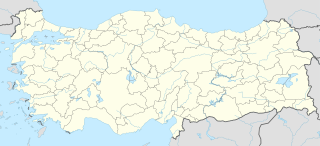 W
WAdramyttium was an ancient city and bishopric in Aeolis, in modern-day Turkey. It was originally located at the head of the Gulf of Adramyttium, at Ören in the Plain of Thebe, 4 kilometres west of the modern town of Burhaniye, but later moved 13 kilometres northeast to its current location and became known as Edremit.
 W
WAigues-Mortes is a commune in the Gard department in the Occitanie region of southern France. The medieval city walls surrounding the city are well preserved. Situated on the junction of the Canal du Rhône à Sète and the Chenal Maritime to Grau du Roy, the town is a favoured stop for canal craft and Dutch barges.
 W
WThe Ain Diwar Bridge is a ruined masonry arch Roman bridge, 3.5 km northeast of the town of Ain Diwar, Syria. The bridge is within vicinity of the Syria, Iraq and Turkey border region and about 500 m west of the Tigris River of which it used to cross.
 W
WAntakya is the capital of Hatay Province, the southernmost province of Turkey. The city is located in a well-watered and fertile valley on the Orontes River, about 20 kilometers (12 mi) from the Levantine Sea.
 W
WAntioch on the Orontes was an ancient Greek city on the eastern side of the Orontes River. Its ruins lie near the current city of Antakya, Turkey, to which the ancient city lends its name.
 W
WAshkelon or Ashqelon, also known as Ascalon, is a coastal city in the Southern District of Israel on the Mediterranean coast, 50 kilometres (31 mi) south of Tel Aviv, and 13 kilometres (8.1 mi) north of the border with the Gaza Strip. The ancient seaport of Ashkelon dates back to the Neolithic Age. In the course of its history, it has been ruled by the Ancient Egyptians, the Canaanites, the Philistines, the Assyrians, the Babylonians, the Greeks, the Phoenicians, the Hasmoneans, the Romans, the Persians, the Arabs and the Crusaders, until it was destroyed by the Mamluks in 1270.
 W
WBanias is an ancient site that developed around a spring once associated with the Greek god Pan. It is located at the foot of Mount Hermon, north of the Golan Heights. The spring is the source of the Banias River, one of the main tributaries of the Jordan River. Archaeologists uncovered a shrine dedicated to Pan and related deities, and the remains of an ancient city founded sometime after the conquest by Alexander the Great and inhabited until 1967; the ancient city was mentioned in the Gospels of Matthew and Mark by the name of Caesarea Philippi.
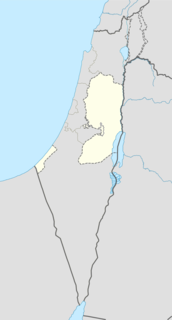 W
WBeit Wazan is a Palestinian village in the Nablus Governorate in northern West Bank, located 4.5 kilometers west of Nablus. According to the Palestinian Central Bureau of Statistics (PCBS), the village had a population of 1,120 inhabitants in mid-year 2006.
 W
WCaesarea Philippi was an ancient Roman city located at the southwestern base of Mount Hermon. It was adjacent to a spring, grotto, and related shrines dedicated to the Greek god Pan. Now nearly uninhabited, Caesarea is an archaeological site in the Golan Heights.
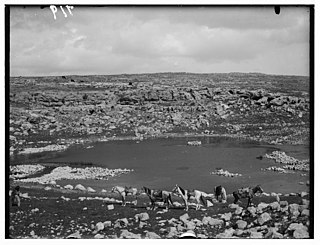 W
WCarmel was an ancient Israelite town in Judea, lying about 11.2 kilometres (7.0 mi) from Hebron, on the southeastern frontier of Mount Hebron.
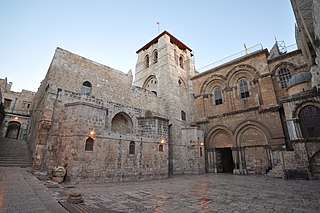 W
WThe Church of the Holy Sepulchre is a church in the Christian Quarter of the Old City of Jerusalem. The church contains, according to traditions dating back to at least the fourth century, the two holiest sites in Christianity: the site where Jesus was crucified, at a place known as Calvary or Golgotha, and Jesus's empty tomb, where he was buried and resurrected. The tomb is enclosed by a 19th-century shrine called the Aedicula. The Status Quo, an understanding between religious communities dating to 1757, applies to the site.
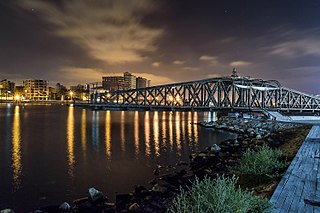 W
WDamietta is a port city and the capital of the Damietta Governorate in Egypt, a former bishopric and present multiple Catholic titular see. It is located at the Damietta branch, an eastern distributary of the Nile Delta, 15 kilometres (9.3 mi) from the Mediterranean Sea, about 200 kilometres (120 mi) north of Cairo.
 W
WJacob's Ford is a ford on the upper Jordan River where a number of bridges were built throughout history, giving rise to the medieval name Daughters of Jacob Bridge. The bridges span the last natural ford of the Jordan at the southern end of the Hula Basin between the Korazim Plateau and the Golan Heights. The ford, then the bridges, have been a crossing point for thousands of years.
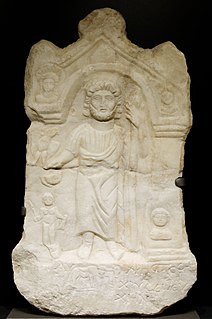 W
WDorylaeum or Dorylaion, called Şarhöyük in Turkish language, was an ancient city in Anatolia. It is now an archaeological site located near the city of Eskişehir, Turkey.
 W
WEdessa was a city in Upper Mesopotamia, founded on an earlier site by Seleucus I Nicator ca. 302 BC. It was also known as Antiochia on the Callirhoe from the 2nd century BC. It was the capital of the semi-independent kingdom of Osroene from c. 132 BC and fell under direct Roman rule in ca. 242. It became an important early centre of Syriac Christianity.
 W
WAl-Eizariya or al-Azariya, also referred to by its classical name of Bethany, is a town in the West Bank. The name al-Eizariya refers to the New Testament figure Lazarus of Bethany, who according to the Gospel of John, was raised from the dead by Jesus. The traditional site of the miracle, the Tomb of Lazarus, in the city is a place of pilgrimage.
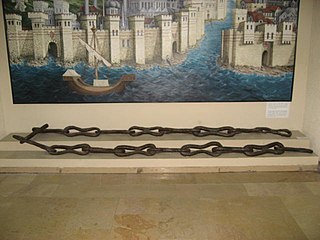 W
WThe old Tower of Galata was a tower which stood on the north side of the Golden Horn in Constantinople, inside the citadel of Galata. The tower marked the northern end of the great chain, which was stretched across the mouth of the Golden Horn to the Tower of Eugenius to prevent enemy ships from entering the harbor. The tower contained a mechanism of elevation gears for raising and lowering the chain.
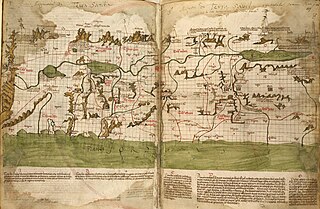 W
WThe Holy Land is an area roughly located between the Jordan River and the Mediterranean Sea that also includes the Eastern Bank of the Jordan River. Traditionally, it is synonymous both with the biblical Land of Israel and with the region of Palestine. The term "Holy Land" usually refers to a territory roughly corresponding to the modern State of Israel, the Palestinian territories, western Jordan, and parts of southern Lebanon and of southwestern Syria. Jews, Christians, and Muslims all regard it as holy.
 W
WThe Horns of Hattin is an extinct volcano with twin peaks overlooking the plains of Hattin in the Lower Galilee, Israel.
 W
WMansoura is a city in Egypt, with a population of 960,423. It is the capital of the Dakahlia Governorate.
 W
WThe Muristan is a complex of streets and shops in the Christian Quarter of the Old City of Jerusalem. The site was the location of the first Bimaristan of the Knights Hospitaller.
 W
WNicaea or Nicea was an ancient Greek city in northwestern Anatolia and is primarily known as the site of the First and Second Councils of Nicaea, the Nicene Creed, and as the capital city of the Empire of Nicaea following the Fourth Crusade in 1204, until the recapture of Constantinople by the Byzantines in 1261.
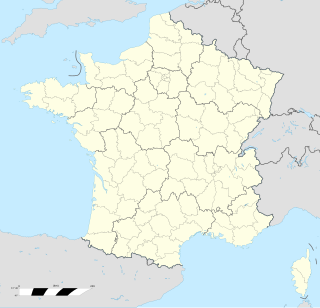 W
WLe Puiset is a former commune in the Eure-et-Loir department in northern France. On 1 January 2019, it was merged into the new commune Janville-en-Beauce.
 W
WThe Well of Souls, also known in Christianity and Judaism by the time of the Crusades as the "Holy of Holies", is a partly natural, partly man-made cave located inside the Noble Rock under the Dome of the Rock shrine in Jerusalem. The name "Well of Souls" derives from a medieval Islamic legend that at this place the spirits of the dead can be heard awaiting Judgment Day. The name has also been applied to a depression in the floor of this cave and a hypothetical chamber that may exist beneath it.